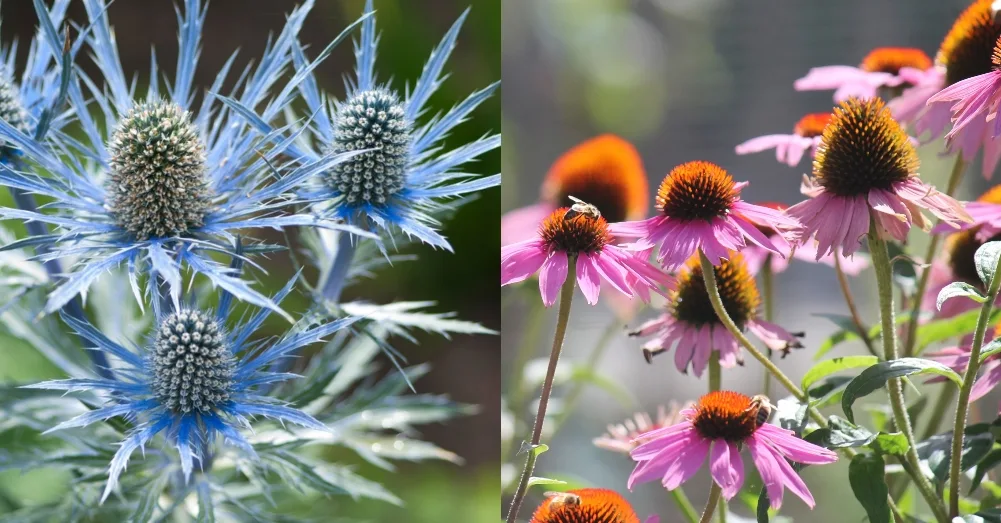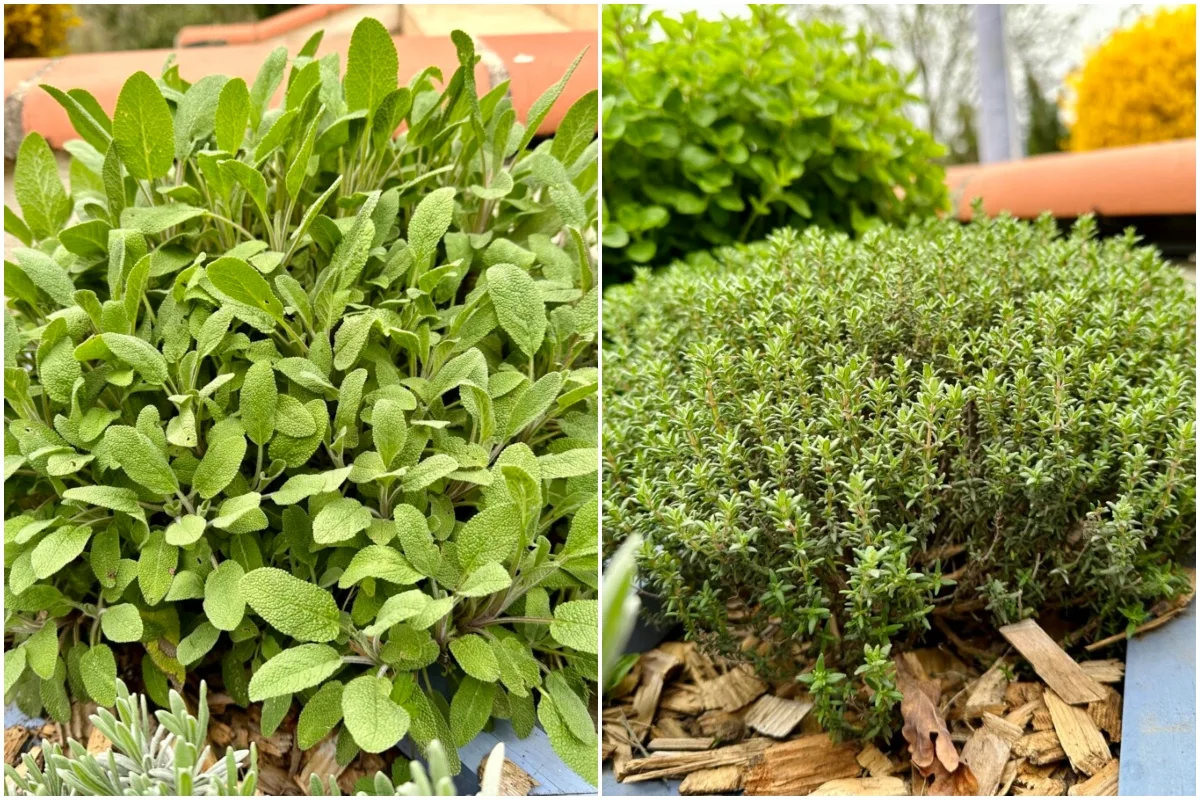
Last year was a year of extreme drought around the world. From North America to Europe and on to Africa and Asia, few countries escaped the parched earth, fires, and record-breaking temperatures that characterized 2022.
Many home gardens suffered under the strain, and although we avoided the catastrophic fires that touched much of France where we live, the dead trees around our village remain as evidence of the drought and the water restrictions that bound us for months.
Fortunately, we didn’t suffer major losses at our home, thanks in large part to the mature trees and bushes that have developed deep roots during past droughts.
Our drought-tolerant plants, in particular my herbs, also survived the extreme summer.
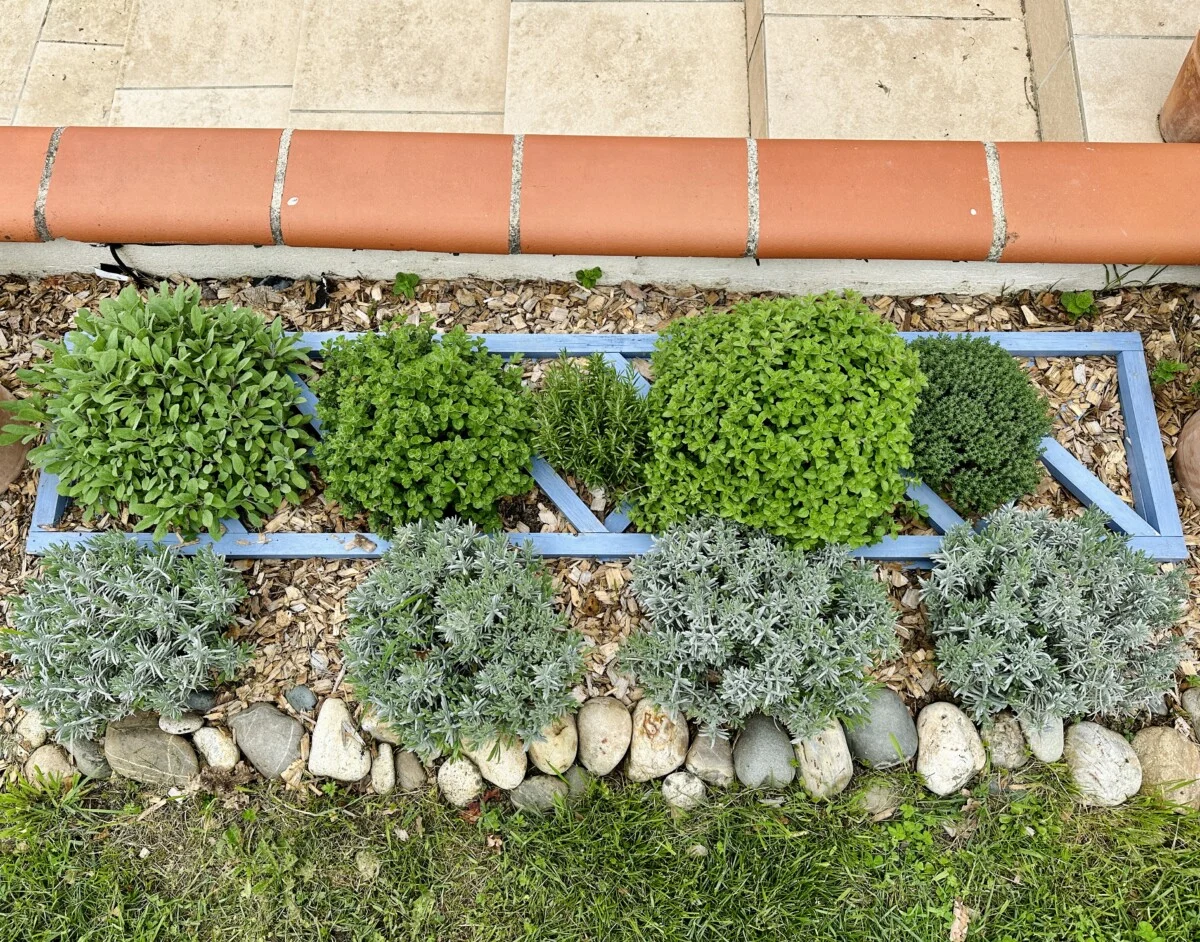
Preparing for the Future
Over the past few years, it’s become impossible to ignore the longer heat waves and summer dry periods here, especially since we don’t have air-conditioning in my home!
It was easy to see that we were moving towards a future with more extreme weather conditions, and I decided to fight back by adapting my garden.
First, I shifted my focus to trees and plants that can tolerate dry conditions. Taking an example from my childhood in the American South, I began planting a few drought-resistant crops in my vegetable garden each summer.
Looking nearby to Italy as an example, my husband and I replaced our high-maintenance border trees with Italian Cypresses. Next, we installed rainwater tanks to help ensure available water for our garden.
Lastly, I drew inspiration from our neighboring region of Provence, France, and I planted an herb garden that doesn’t have to be watered all summer.
On to the Good Stuff – Herbs!
Once established, the herbs I chose require little maintenance other than pruning back and they can survive harsh conditions, including extreme heat and drought. Here are the six herbs that are the stars of my herb garden today:
1. Oregano (Origanum vulgare)
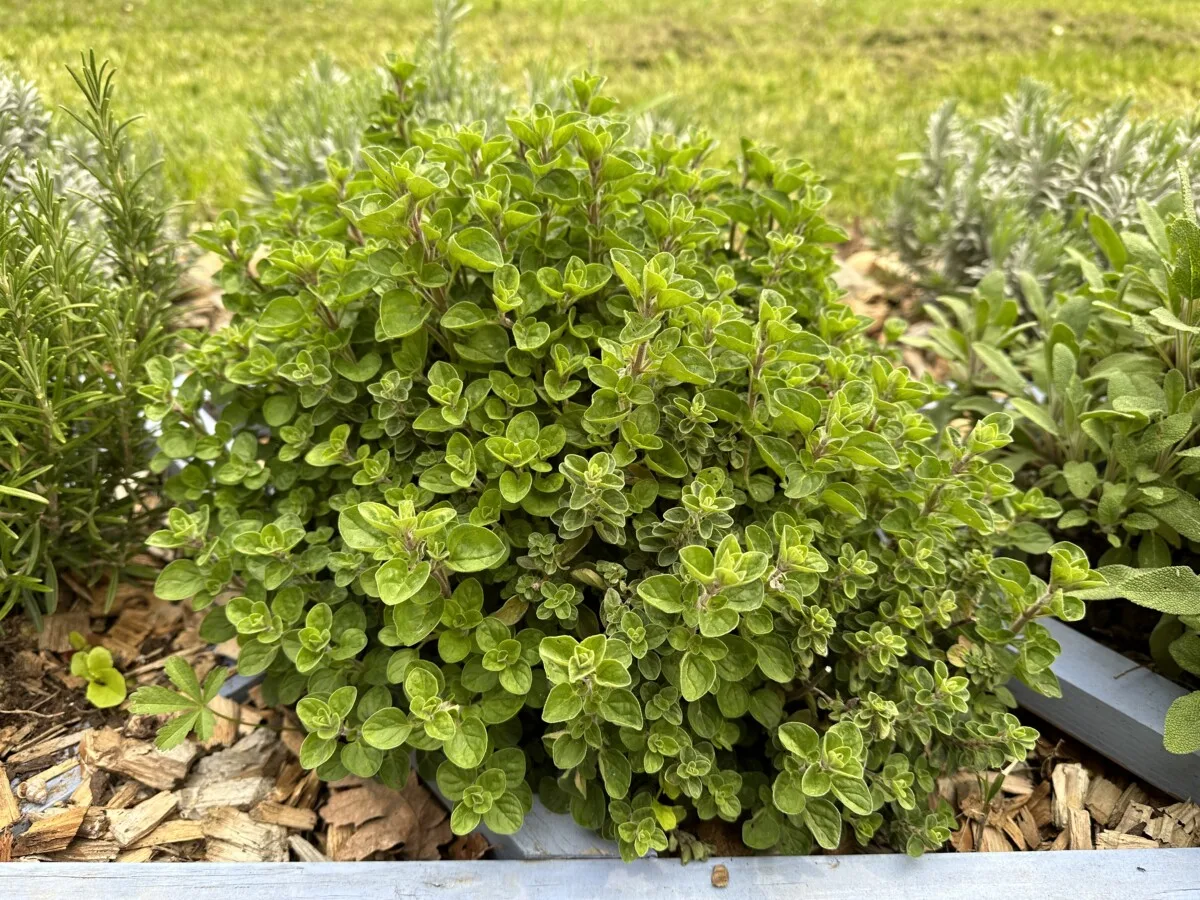
Oregano is a Mediterranean herb that is a major component in the herbs of Provence mix as well as various Italian seasoning mixes.
It grows best in full sun and well-drained soil. That said, it is not demanding and mine grows happily in heavy clay soil that has been lightly amended with a garden soil mix.
Oregano is extremely drought-tolerant and produces abundantly even during dry times. It’s a pleasure to see drying oregano hanging in the kitchen at all times of the year, and the joy of adding my home-grown herbs to dishes is incredibly satisfying.
Oregano plants should be planted eight inches (20 centimeters) apart. They can grow up to two feet tall if left alone.
Since I don’t have a lot of space in my herb garden, I trim oregano when it starts to look untidy and begins to encroach on nearby herbs. I like to preserve a small, ball-shape, and I trim back the flowers before they produce seeds.
Oregano is a perennial in USDA Zones 5-10. Otherwise, it can be grown as an annual or grown in a pot and overwintered indoors, ideally using a grow light.
2. Marjoram (Origanum majorana)
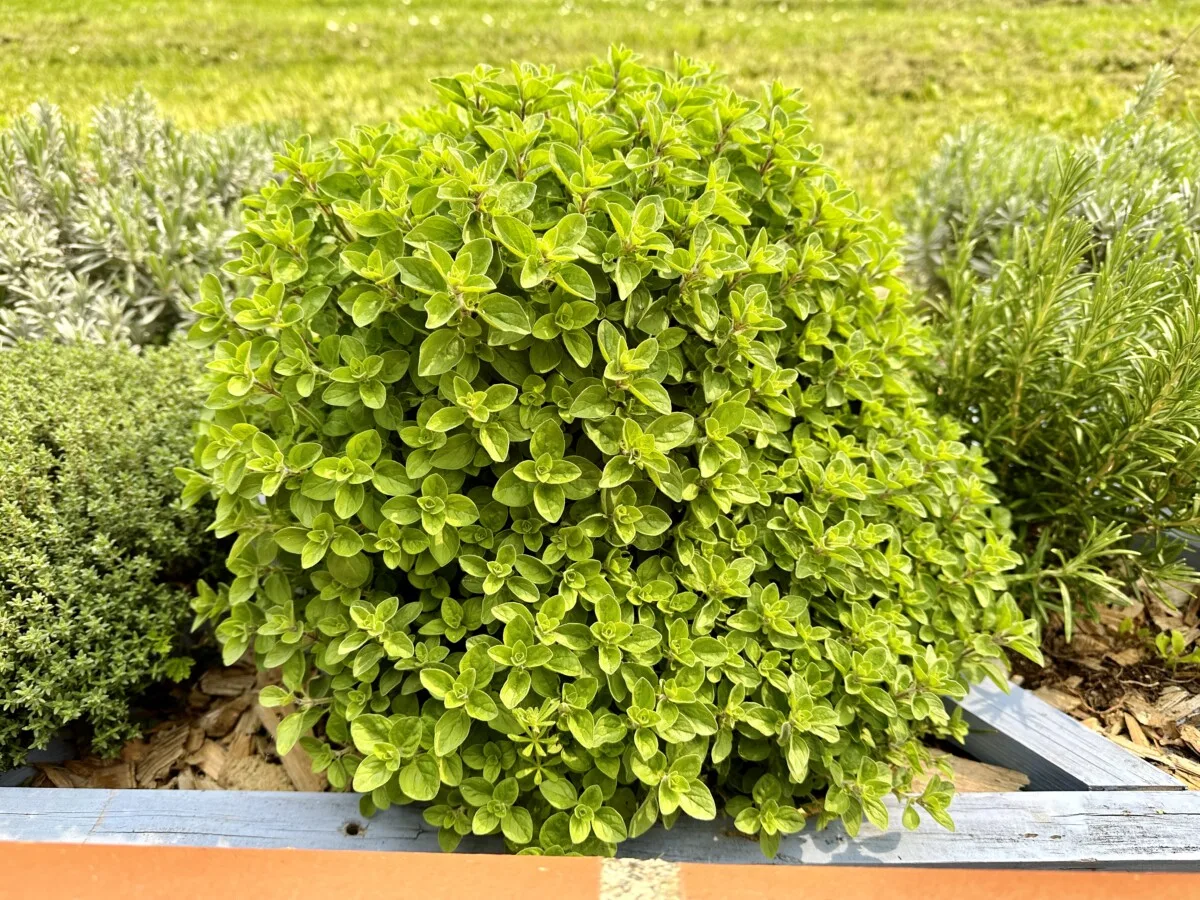
Marjoram also known as sweet marjoram, is another native Mediterranean plant. It is a mild alternative to oregano and is frequently substituted in recipes calling for oregano.
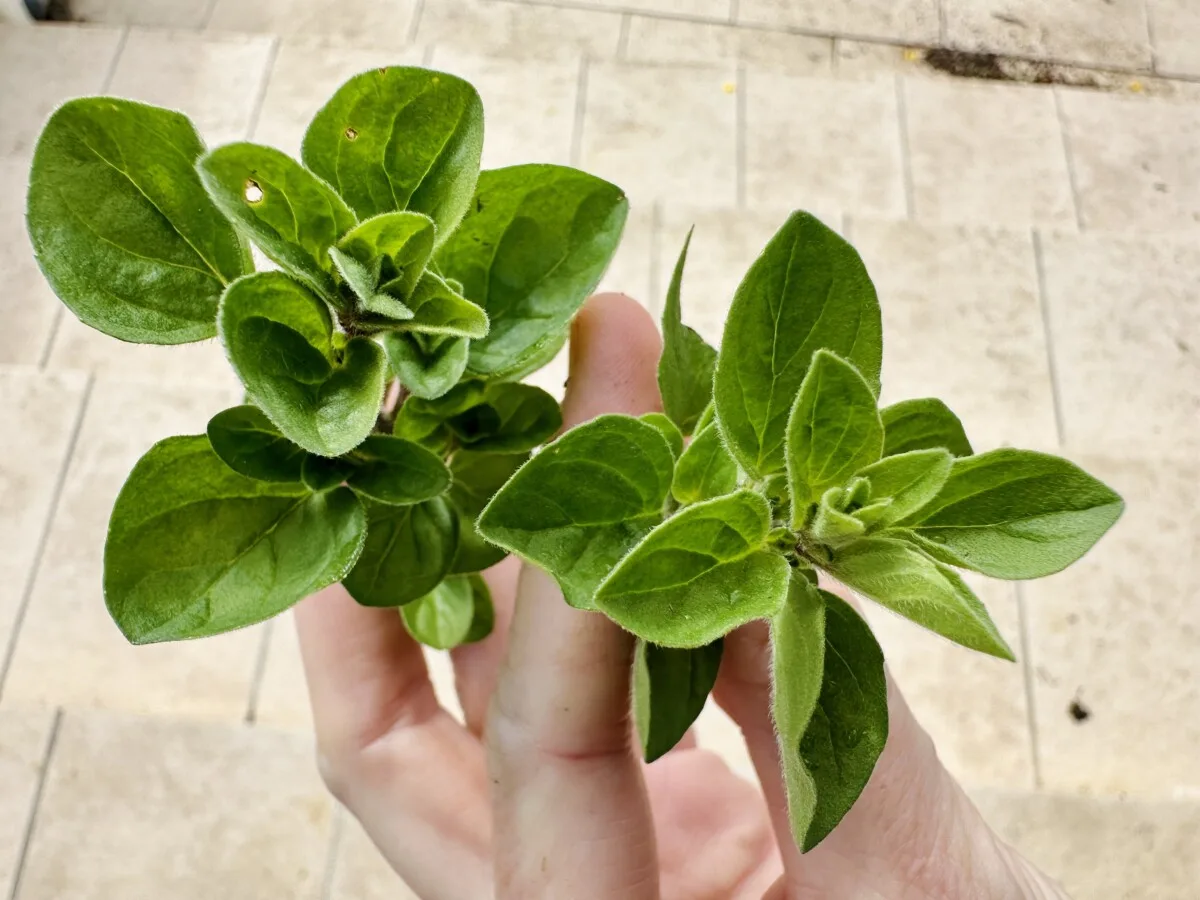
Marjoram is also frequently mistaken for oregano. Although marjoram has smaller leaves, the leaves have the same shape and structure as oregano.
Marjoram is best planted in the spring to allow for good root development before the onset of summer droughts, and it’s winter hardy in USDA Zones 9-10.
Fertilization isn’t necessary, but you should wait three months after planting before harvesting for the first time.
3. Thyme (Thymus vulgaris)
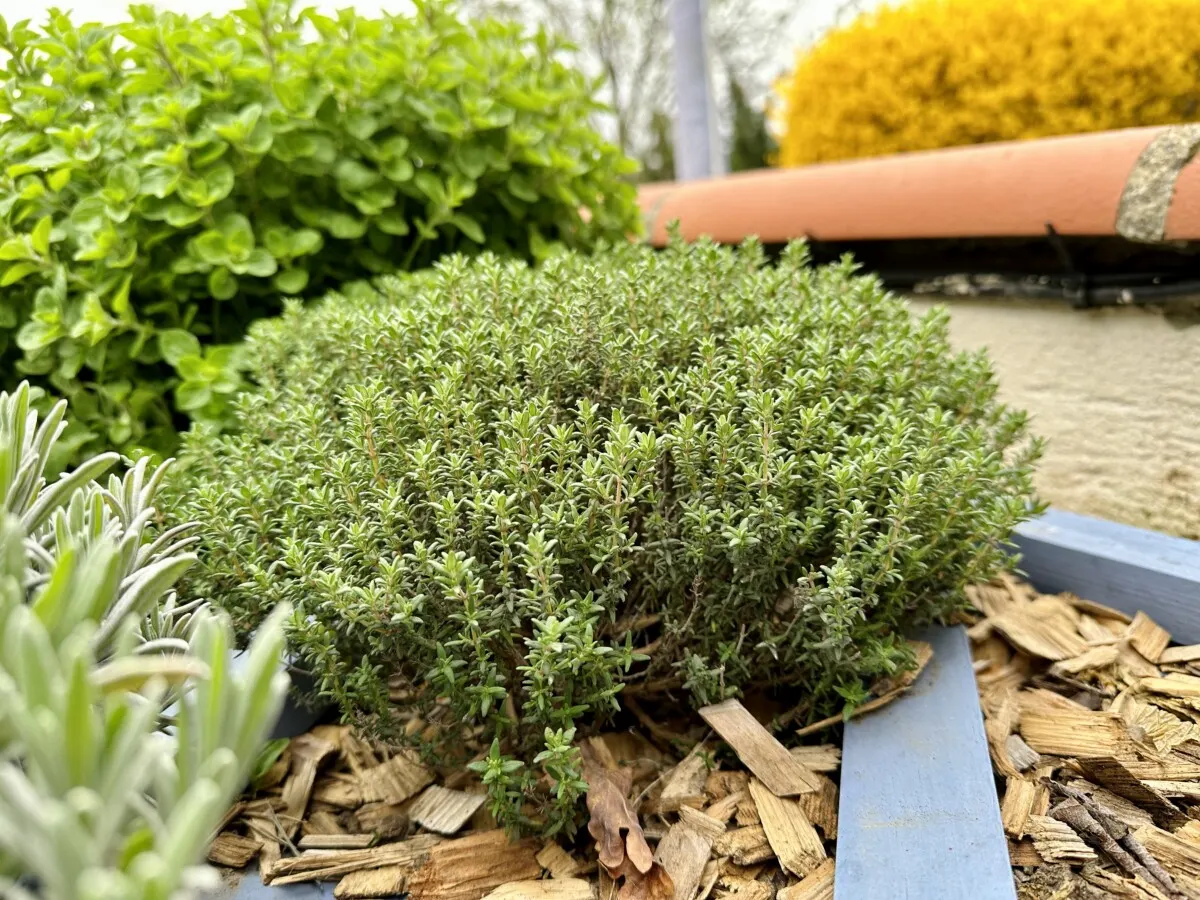
Thyme is quite possibly my favorite herb to grow. It is virtually impossible to kill and requires little maintenance. In my current herb garden, I keep it trimmed to a small ball as I do with the oregano and marjoram plants. However, I’ve also used it before in landscaping as a border along a partially shaded walkway.
I watered it for the first year a few times but never again. I even left the country for several years, and it survived. Ideally, you should trim thyme before it gets woody and fans out, but if you don’t mind a messier look, thyme doesn’t mind either.
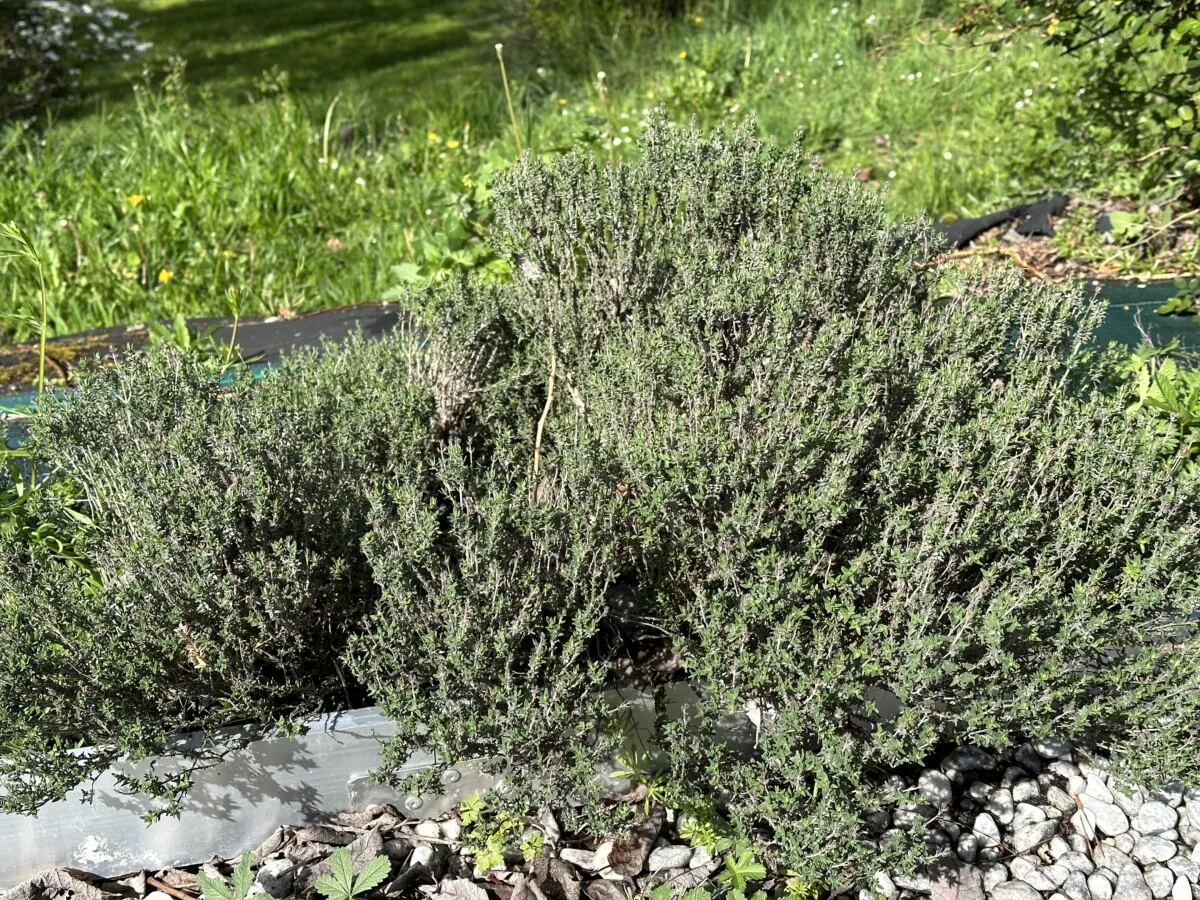
I grow common thyme which is a Mediterranean native and another key ingredient in the herbs of Provence mix. It is extremely drought-resistant and hardy to Zone 5. English thyme, on the other hand, is said to be more cold tolerant if that’s a concern for where you live.
4. Rosemary (Salvia rosmarinus)
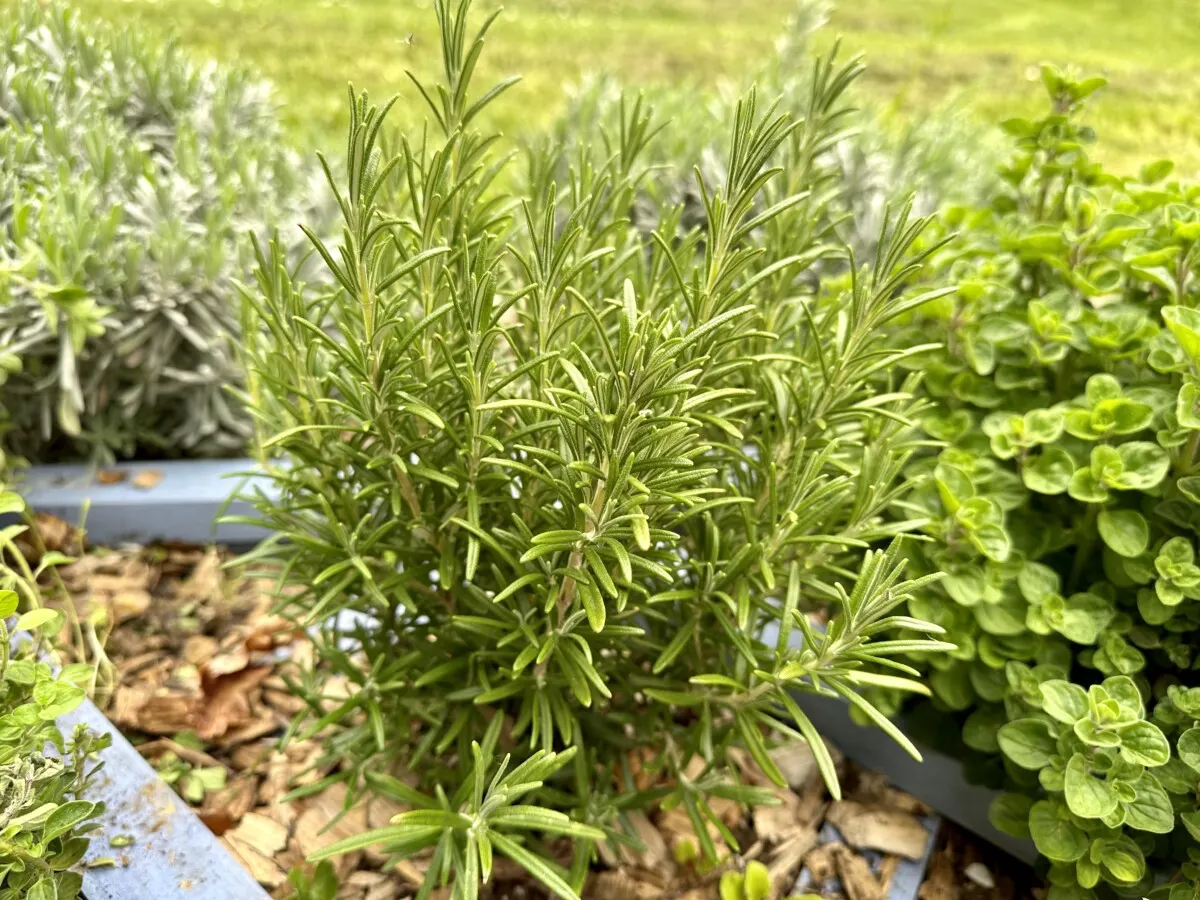
Who doesn’t love rosemary? Rosemary is a key ingredient in many dishes and another essential for your herbs of Provence mix. Rosemary is not cold tolerant and can only be grown as a perennial in Zones 8-9 unless you choose a variety like Arp, Hill Hardy, or Alcade, which can survive in slightly colder zones (6-7)
Rosemary is temperamental and slow growing in its first year, but once established, it can live for 30 years and can even be pruned to grow as a hedge.
Rosemary needs full sun and will die quickly if overwatered. When planted in the ground, it is drought-tolerant, although I’ve noticed that it prefers an occasional watering (once a week) when temperatures exceed 35°C (95°F).
5. Sage (Salvia officinalis)
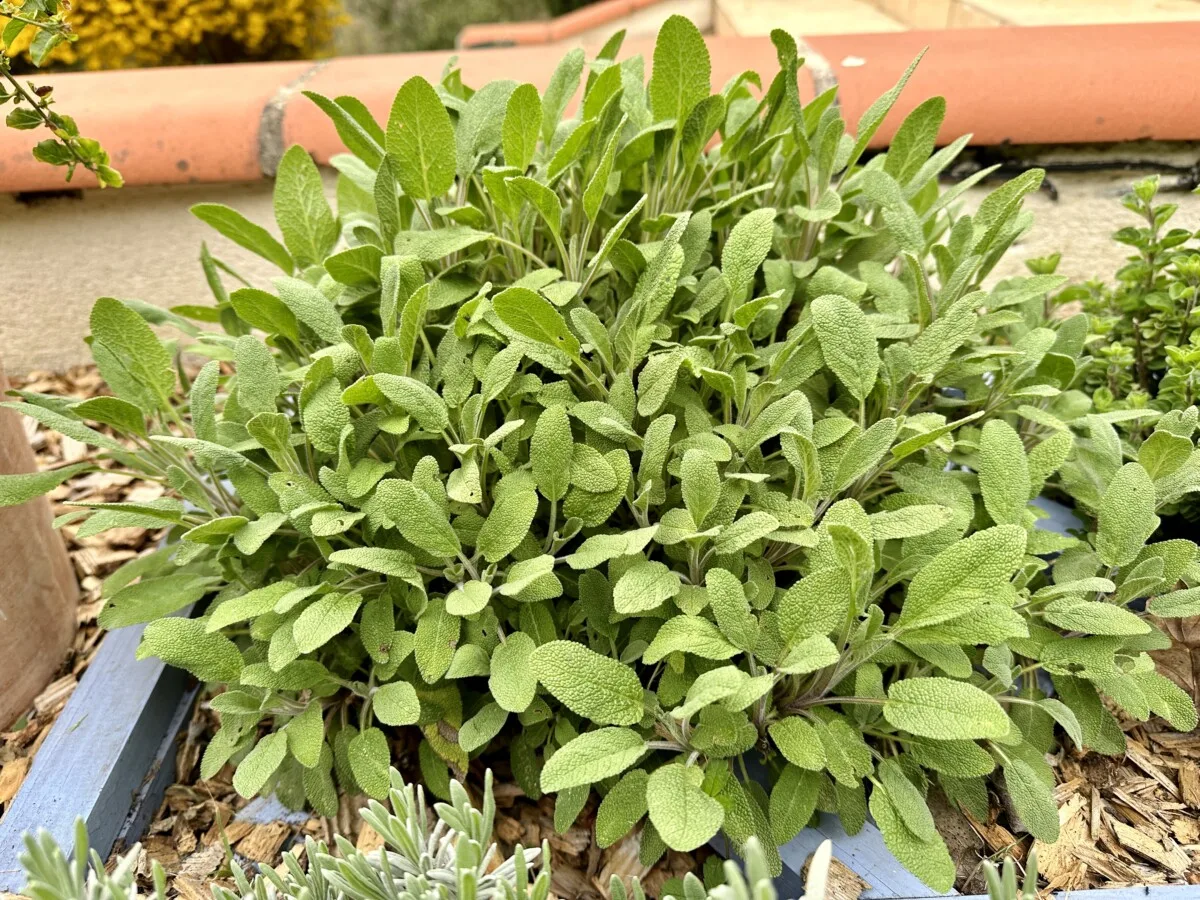
Unlike rosemary, sage is incredibly easy to grow and produces abundantly. I love the color and details of the leaves and think it’s a beautiful landscape plant aside from its culinary and medicinal uses.
It is hardy in Zones 4-11 and prefers well-drained soil. Again, my herbs are all planted in lightly amended clay soil, and the sage thrives there even despite our wet winters. As for producing abundantly, I have more dried sage than I can use, which means I get to gift it to neighbors and friends.
If left untrimmed, sage can grow to a height of 30 inches or 76 centimeters. On the other hand, pruning is simple and fast, and the scent of freshly cut sage makes it well-worth your time!
6. Lavender (Lavandula angustifolia)
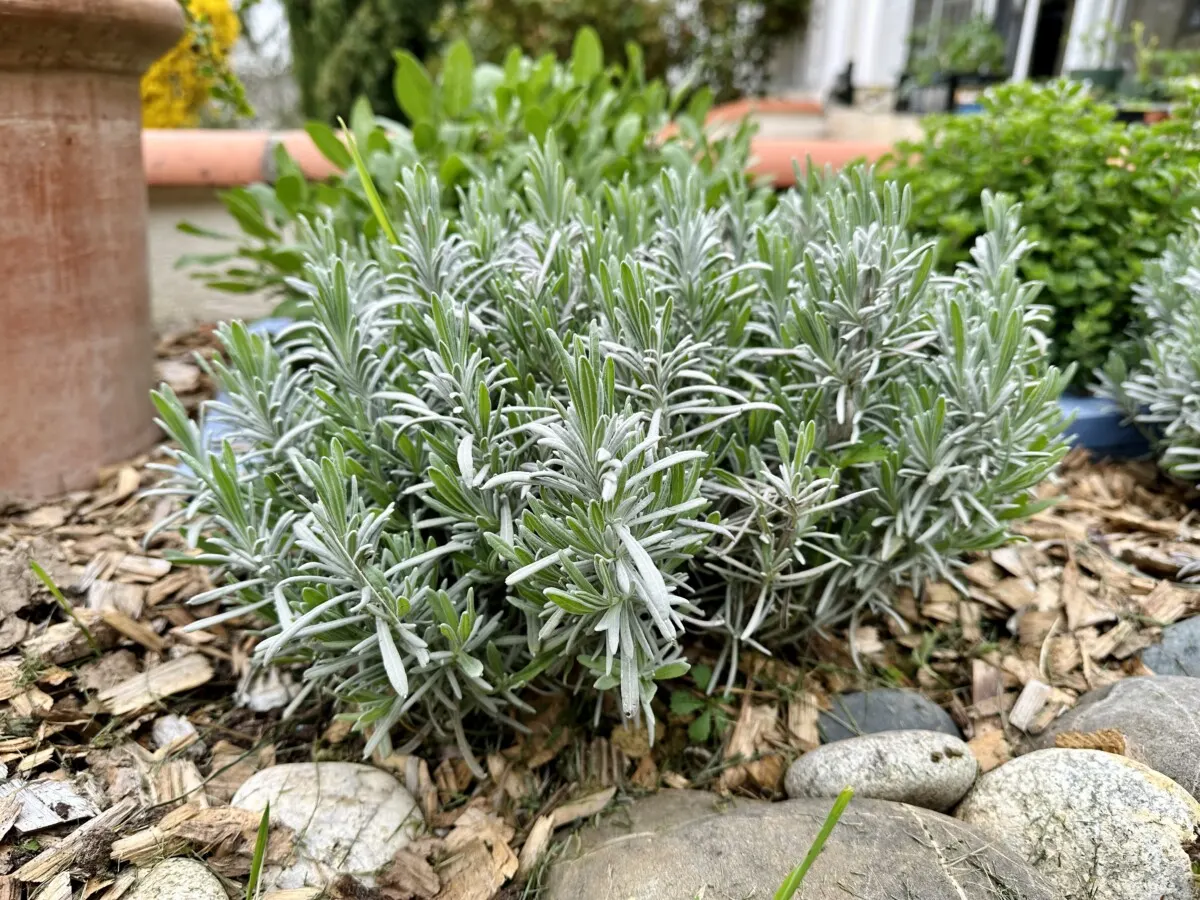
Lavender thrives in dry climates, and most varieties are hardy from Zones 5-9.
Personally, I love everything about lavender: the scent, the flowers, the silver-toned leaves, and the taste. My herb garden is planted by the stairs that leads down to our pool, and the scent of blooming lavender on a hot day in July is something I treasure.
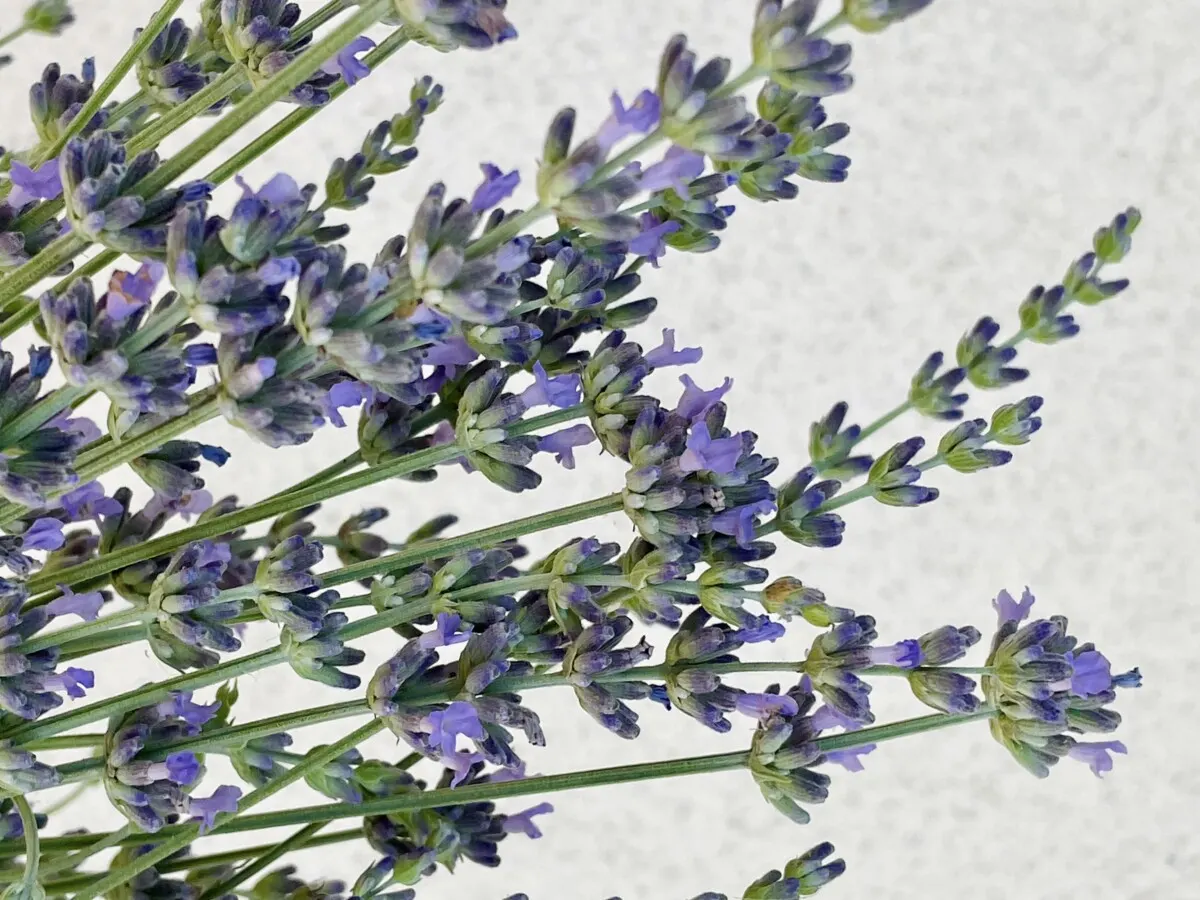
Lavender prefers full sun but will tolerate partial sun quite well. It requires annual pruning in order to maintain an attractive shape. Left untrimmed, the plant fans and develops large woody stems.
Lavender is extremely drought-tolerant after the first year of getting established. I’ve used lavender in home landscaping before, and I never watered it beyond the first year.
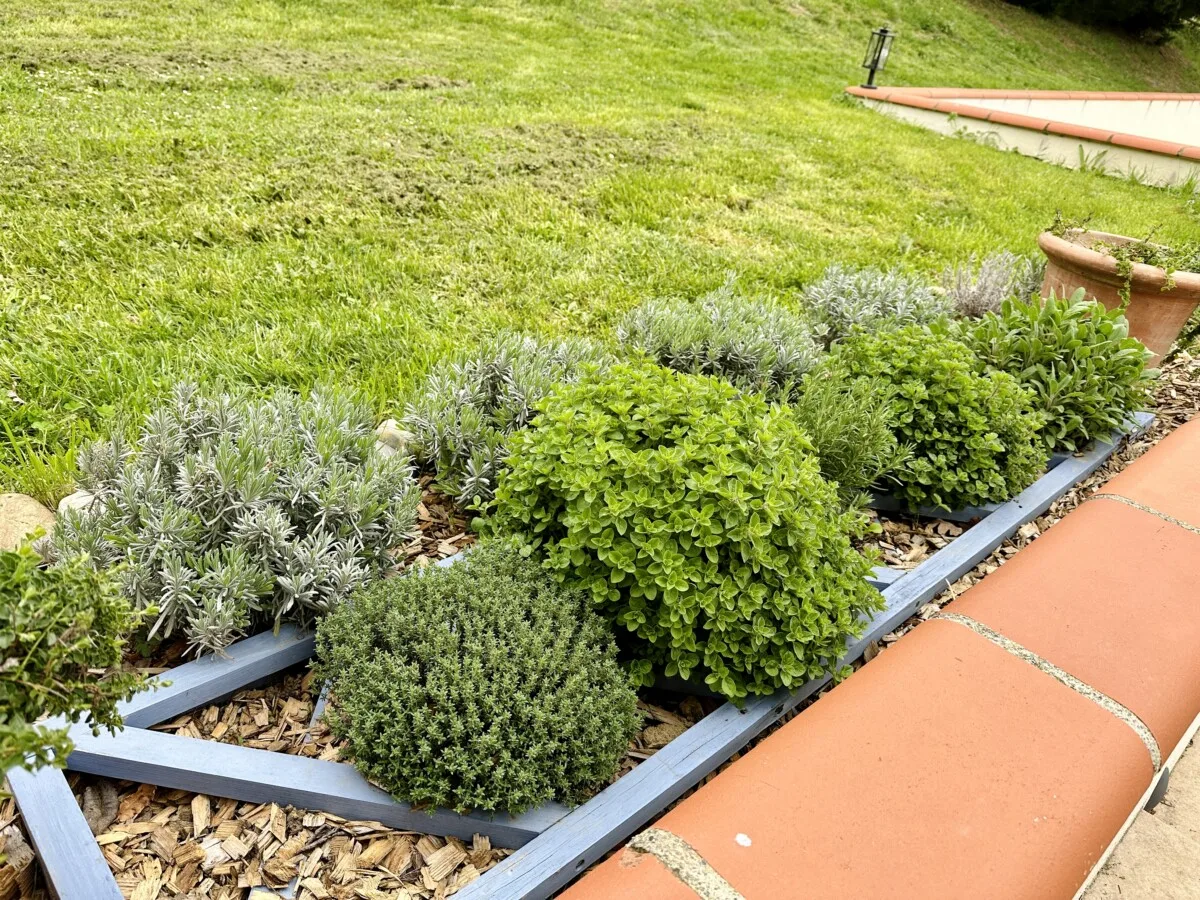
As the world continues to get hotter and droughts become more frequent, plants that are resistant to heat and dry spells will be the way of the future. Why not start today with a drought-tolerant herb garden? You’ll enjoy not only fresh herbs but you’ll also love having one less plant to water!

